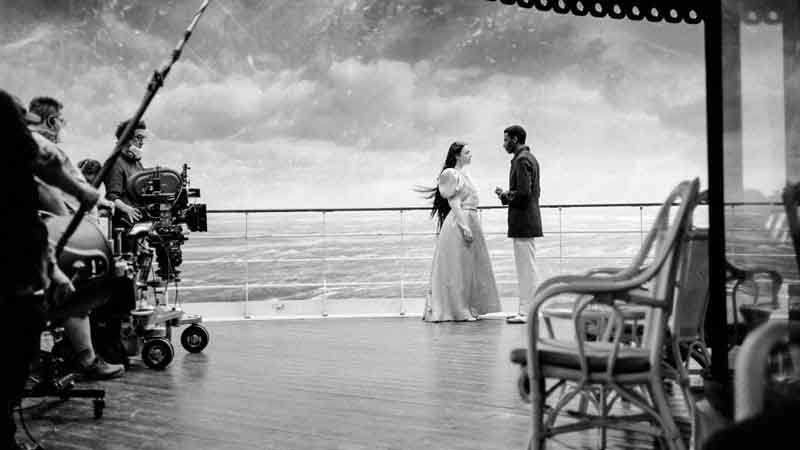
Poor Things, the Golden Globe-winning, Oscar-nominated film starring Emma Stone and Willem Dafoe, was brought to life with a mammoth virtual production set-up powered by PIXERA technology.
Key to the creation of much of the visual effects behind Poor Things was a virtual production rig utilizing no less than 2,400 individual LED cabinets, with content rendered by four custom-built, PIXERA ONE media servers.
Overseen by the film’s virtual production supervisor/operator, Adrian Weber, the huge virtual production stage comprised more than 6,400 square feet (600 square meters) of INFiLED INTI 2.6mm LED wall, along with more than 1,500 amplifiers (outputting a peak power of 360kW) and 5.5km of cabling. This gargantuan set-up, weighing more than 21 tons, was constructed around the physical set representing the steamship on which Bella embarks on her journey of discovery from Lisbon in the company of debauched lawyer Duncan Wedderburn (Mark Ruffalo).
The background was made up of multiple computer-generated and composited pre-rendered video layers by Union VFX, played back from multiple PIXERA media servers in perfect sync, with the remainder of the film shot on traditional sets, confirmed Weber. “It was a massive studio build—a full two-floor ship complete with furniture, paintings and everything… it was incredible. That whole part was shot on the stage in front of the LED. There was a lot of glass, a shiny floor, lots of reflections—everything that’s [usually] a bit tricky. The result was that you felt really immersed in the world of the film.”
[SCN Finally Goes Inside the Vegas Sphere ... and We Had a Ball]
Poor Things’ virtual production stage was constructed by ICT AG and HALOSTAGE at Origo Studios in Budapest, Hungary, where the production was based. The LED wall’s total resolution was 23K (23,040×3840 pixels), meaning the background content had to be rendered in four sections, one per PIXERA ONE server.
It was the first time Weber had used PIXERA, and he had to learn fast, since both PIXERA operators—Michael Schüller and Mario Meszarits—got COVID in the middle of the shoot. "Although it was quite an intense experience for me to get up to speed, PIXERA's user-friendly interface helped me to use the system easily and made it very clear to me what I was working on,” he said. “Of course, I’d also done a lot of postproduction before, so many of the features—timelines, layer stacking, live previews, resource distribution—were already very familiar to me.
“The second biggest factor was the support provided by AV Stumpfl. Benni [Müller], Olli [Kilian] and the whole team were constantly available for us right from the start—I can’t tell you how helpful it is to have an actual person on the other end of the phone who will talk you through any challenges.”
Production on Poor Things wrapped up at the end of 2021, with the virtual production shoot having taken under four weeks to complete. Since finishing work on Poor Things, Weber has used PIXERA “tons of times” on other projects, he said, including all 2D film work with HALOSTAGE and several live events. In addition to its complete feature set, ease of use and dedicated support by AV Stumpfl, he was also impressed by the speed with which the PIXERA software is updated. “In the end, it was both software and service that made an absolute difference,” concluded Weber.







